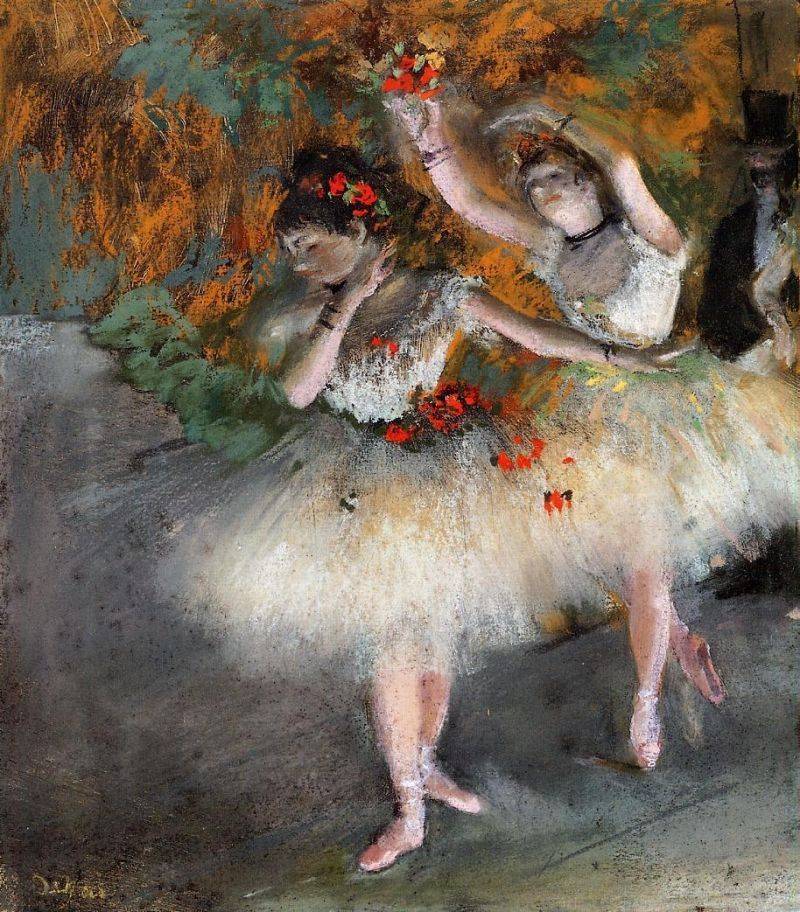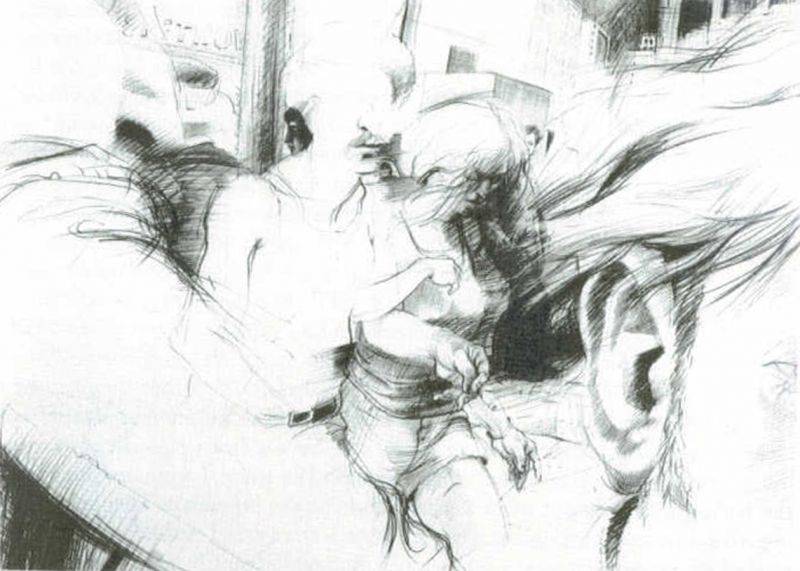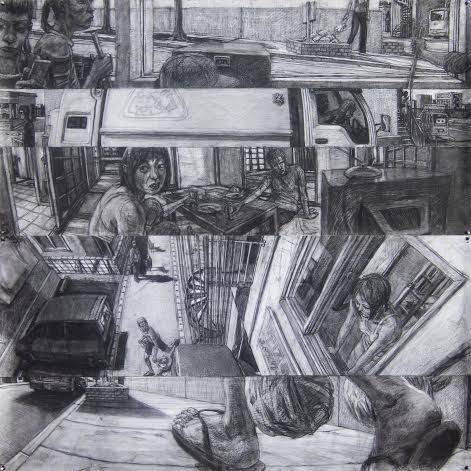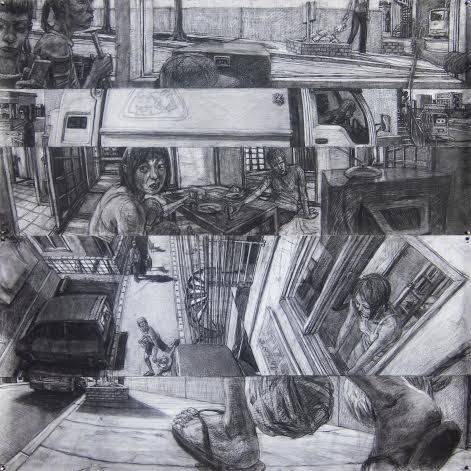Christopher Troutman is a midwest boy, born in Missouri and raised in Illinois. He completed a BFA at Bradley University in 2003 and then moved to Japan. There, he and his wife opened an English language school in Kagoshima City. According to his press release, in 2008, after completing an MFA in drawing and painting at California State University, Troutman taught studio courses in drawing and painting at Eastern Kentucky University, Vincennes University, and Eastern Illinois University. He is now teaching drawing at Lamar University in Beaumont, Texas. Starting Tuesday the 20th, his work will be on exhibit at Indi Go in downtown Champaign.
Smile Politely: When did you first notice art? How old were you, where was it…?
Christopher Troutman: I think it depends on what you mean by art. I remember making drawings when I was a daycare age…trying to draw things I had seen, like cars or people. In elementary school I was emulating imagery from Ninja Turtle toy cartons or animation, like Transformers cartoons. In high school, maybe at the age of 15, I noticed The Maxx on MTV’s Oddities. And then started buying comic books and, throughout high school, started taking cues from that kind of art, working with line mainly, and illustrating a friend’s stories, but also painting, but only from photographs -unless it was some kind of invented, comic book-like imagery.

Two Dancers Entering the Stage; Degas
Troutman: In college, that was when I may have first noticed “art,” enjoying the 19th century art history class, and actually continuing to like artists from that era until now. I remember liking Degas’s drawings and paintings in college, and his compositions and points of view. After college, I thought the alternating points of view between comic panels may relate to the varied vantage points that Degas sets the viewer at from drawing to drawing.
In whatever class was next at Bradley (American Art, maybe), I liked the Ashcan artists and then Hopper and then in grad school at California State, Long Beach, faculty and students told me about Robert Birmelin, so I stole some things from him (that reminded me of comics, splitting up images into sections to show a passage of time like the Epilogue to Marvel Comics Presents Weapon X, which I remember reading in high school). But Yu Ji, my mentor at Long Beach, he had a big influence on me, even when I was working in Japan before grad school, and especially after finally getting to work with him, 2006-2008.

The City Crowd, the Ear; Birmelin
SP: How did your work in Japan influence and guide you as an artist and person?
Troutman: In Japan I received advice from a local artist on what judges expected for juried shows (submit the maximum number of works possible at the maximum size). I got focused on researching shows and trying to build my resume through exhibiting and getting prizes/recognition, while operating an English school that my wife and I owned. It was challenging to balance…the difficulty of living over there in such a different place and culture, with a job I had little training in or desire to pursue as a career and generally being an outsider. I think it influenced how I worked. Many times I’ve heard people say my work has an “overwhelming” quality that I think I kind of developed while over there during a time where I had very high anxiety. I think that kind of feeling is something I try to get into my work through composition, point of view, and complexity.
SP: What did Yu Ji teach you? Or what is the most useful thing you learned from him?
Troutman: I started stealing things from Yu Ji when I was in Japan. I had researched grad programs my last year of college and was impressed by his work. I didn’t get in anywhere so I moved to Japan. I had been dating my wife at the time. She had graduated from Bradley University the semester before me and went back to Japan, so I joined her there when things didn’t work for me here. While in Japan, I kind of reverse engineered what I thought Yu Ji did, which probably wasn’t too different from sketches I had seen of Degas or any artist that makes their finished work as composites of sketches, [plus] composition studies that practice combining the raw observational material. Regardless, I went out into the city, usually drawing while riding on trains or buses in Kagoshima, the crazy place we lived and had that school. Then I worked on combining them to create compositions. Sketches helped, but I ended up filling in a lot of information from my memory or imagination. At some point, I tried to work more from my imagination regularly, yet based images on remembered experiences, because I thought it was more challenging: what I imagined comic artists doing, working from their heads, yet I think they use references as often as it is convenient.

Christopher Troutman
Troutman: Anyway, after I had built a portfolio while in Japan, I applied to Long Beach and, luckily, they accepted me. I figured I had to go to grad school because I had no idea what to do to make my work better. The paintings were ok, but I didn’t know what to do to make them more interesting or stronger works. In grad school with Yu Ji, I learned to draw very precisely from observation, the process becoming very clearly explained, unambiguous, in contrast to the criticism and theory class which I likened to comparative religion. I remember in a demo where Yu Ji was trying to get students to be inquisitive about their subject asking “WHY does our model LOOK this way? How can you describe her accurately? What is unique to her?” I don’t think I would be making any of the work I am making now if I hadn’t studied with Yu Ji.
SP: Can you expand on your anxiety and how it helped/influenced your art?
For example, I used to wonder if I could act well when I wasn’t going through a depressive phase. Silly notion, as depression makes me feel flat and grey, not raw and in- the-moment.
Troutman: I had to search for a job and get a visa sponsor within [90 days], before being considered an illegal immigrant. I had to force my future wife to go through the online yellow pages to search for English schools to apply to (she doesn’t mix well with computers and found the process very frustrating). I think we had to figure out how to get internet hooked up as well at the house, which was a task as well because rural Japan is not very up to date, technologically. With a few weeks left, I managed to get a reply saying that they were looking for a teacher. They became my visa sponsor. At that point I had exhausted all English schools in the prefecture of Miyazaki and had started [looking] county by county in Kagoshima, the neighboring prefecture to the south. We had to secretly drive there for my future wife to research jobs at an employment agency. Oddly, at the time she was working in the capitol city in Miyazaki and her employers threatened to force her to pay for advertising for a replacement if she quit right away. That is a common practice in Japan, [even] though it is illegal to threaten someone for quitting a job. I found an organization that helped people in that kind of situation to try to get her to quit after a two weeks notice, but she kept working there for a month or so, commuting 3 hours to Miyazaki two nights a week by train. I also developed walking pneumonia, caught by someone there. We had to pay a huge sum for a down payment for the apartment (another Japanese custom: “key money” to the owner and a “thank you” fee to the realtor, extra three months’ rent, plus the first and last months’).
I had only one week of training on how to be an English teacher and job shadowed the man I replaced for one week. I didn’t speak Japanese well, though I had studied for a year in college. The school I worked at closed after 6 months because the owner was a politician who had bought the school for PR and spent all his money on the campaign. Then he lost the election and all his money. He gave us all of the materials for teaching and we kept as many students as possible and spent even more money on the next apartment because there was a business space below it. My wife became my sponsor (we still weren’t married at the time) and we ended up doing taxes for ourselves…and the paper work for the work visa.
SP: Whoa.
Troutman: During the first year, dealing with all of that, it was difficult to work in the studio, but before the first school closed down, I had finished 3 paintings for the prefectural exhibition and managed to get in. I kept working and the following year, I got the first place prize at the same show and some other prizes that second fall. The anxiety came from having little control over what was coming at me, often finding some new frustrating aspect of Japanese culture, or a limit of my own with language, or my self-image doing a new job badly. In the face of all of that difficulty, I managed to do what I had planned to do: build my portfolio and resume and return to graduate school with the goal to teach art at university (which I’ve been doing for the past 6 years).
SP: What sets you apart? How would we know your work?
Troutman: The scale of my work…makes them a bit imposing; diagonals make them unstable; the point of view are sometimes supposed to be unfamiliar (low vantage points may suggest powerlessness). There typically is a lot of movement through compositions, people coming in and out, being cropped, lots of activity. I think the drawings end up with a similar mood, so the locations I depict start to run together as a result. Even now I may always try to do more than I need to, maybe maintaining a sense of anxiety by trying to balance too many things, but I could be wrong. Often what I depict is based on something I’ve seen, and for whatever reason it comes forward in my mind. I try to make the images interesting so viewers may understand why the experience was memorable. I think it all influenced an atmosphere that is generally in my work to degrees and unifies it, and hopefully makes it memorable.
SP: What can viewers at the Indi Go Artist Co-op expect?
Troutman: The work depicts parts of the different locations I’ve lived in the past 10 years or so, and there will be at least one drawing that juxtaposes two of these places (US and Japan). The rest address narrative; trying to reference comics; showing the passage of time between panels. I’ll try to have at least two large-scale works. My goal is to use drawing to exaggerate aspects of daily visual experience; presenting human figures in contemporary urban settings from dynamic points of view in order to reveal the interest and value of everyday experience as a topic for exploration in drawing.
SP: Do you have a goal in mind for these works? An emotion you want to evoke?
Troutman: Probably a sense of chaos from the activity and movement in the drawings and all of the details and diagonals, in conjunction with point of view. That and the scale, I hope, makes an impact, resulting in being memorable, like the images that inspire the drawings are memorable to me.
SP: What do you like about Indi Go?
Troutman: I’ve visited Indi Go once with Alan Pocaro, who teaches at Eastern Illinois University and has been in a show there at Indi Go, and I’ve heard that Eastern students have set up shows there. I like Indi Go because of the opportunities it provides to artists, especially young artists and curators, to exhibit their work and engage a public audience. I’m glad that it is also in Champaign, where my sister lives. The exhibition will coincidentally be the week after graduation at U of I, creating another chance for me to see my family before my wife, son, and I go to Japan.
See Christopher Troutman’s work, Dividing TIme, at Indi Go Artist Co-Op May 20-23. The opening night reception is Tuesday, May 20th at 6 p.m.








